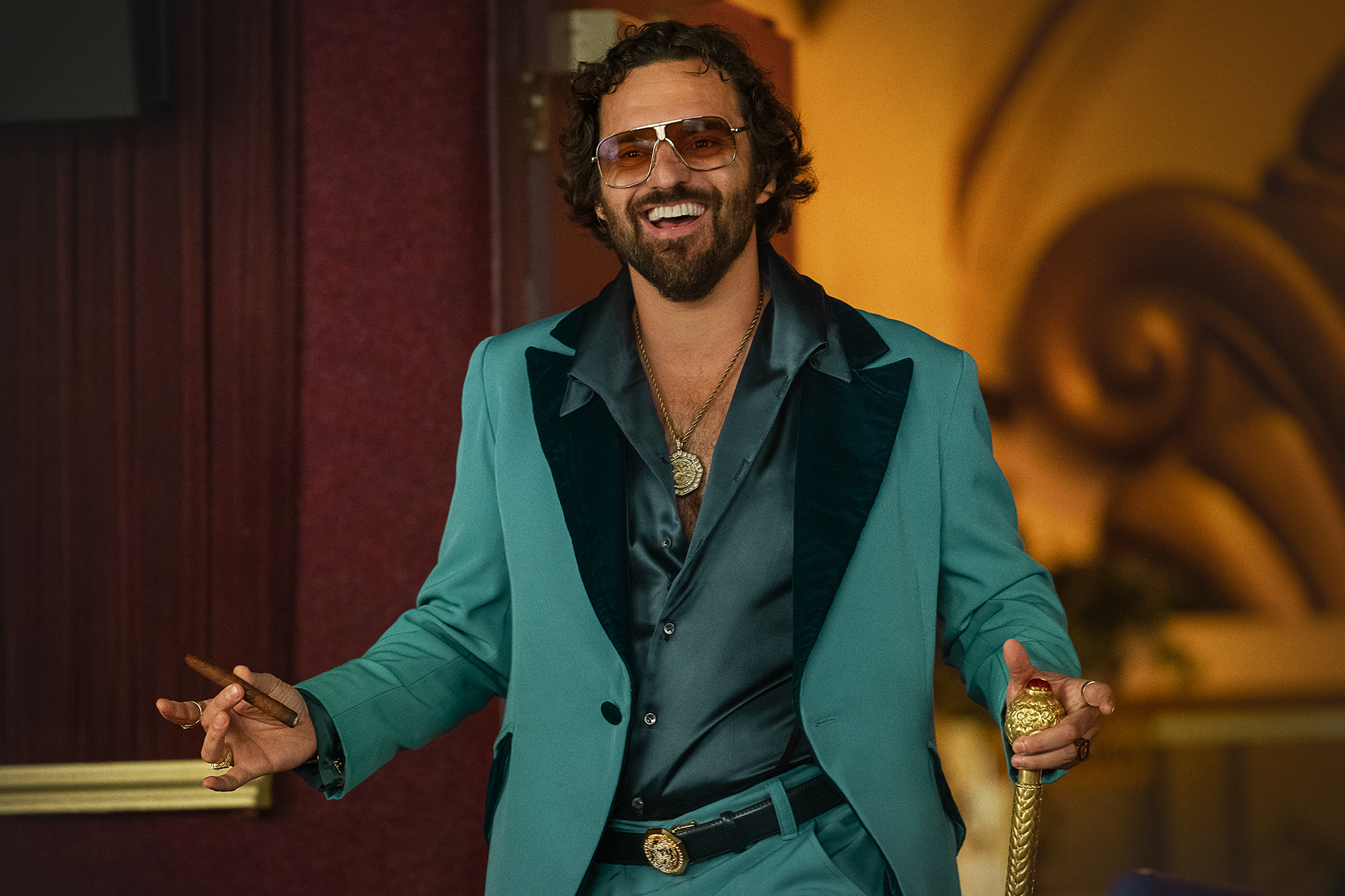This week, we’re going to dive into the fabulous world of music on Minx. Get ready to groove and jam as we explore the latest tunes, beats, and melodies. From toe-tapping pop songs to soul-stirring ballads, we’ll cover it all. Join us as we embark on a musical journey that will leave you tapping your feet and singing along. So, whether you’re a music enthusiast or just looking for some fresh melodies to add to your playlist, Minx has got you covered. Tune in and let the music take you to new heights of auditory bliss. Get ready to hit play and let the good vibes flow!
As Joyce, played by Ophelia Lovibond, delves deeper into the vibrant rock scene of the 1970s, she finds herself entangled in a romance with Graham (Nash?). Meanwhile, Doug, portrayed by Jake Johnson, is working on a pitch for his newest venture, Club Minx. This mind-blowing concept is like a Magic Mike show in Las Vegas, but with an extra dose of retro ’70s charm and cheeky mustaches.
Joyce’s association with famous individuals grows as the popularity of Minx magazine skyrockets. One such individual is her new friend Linda Ronstadt, as well as other ’70s rock musicians. According to creator Ellen Rapoport, this development signifies a new chapter for Minx. The characters are now socializing with the epitome of coolness – the rock stars of the early ’70s. This aligns with reality as actual Playgirl editors frequented rock star circles during this era. Although the stories could have delved deeper and taken a fictional route, they were kept concise to convey the message that Joyce has entered an entirely different realm of existence.
Joyce, our main character, ventures into uncharted territory with a newfound love interest, Graham, who happens to be a British musician. Although his name is never explicitly mentioned, it doesn’t take a detective to uncover that he is inspired by none other than Graham Nash from the iconic band Crosby, Stills, Nash & Young. The decision to leave him unnamed was a deliberate creative choice, according to Rapoport. “I believed that maintaining this air of intrigue added a certain coolness factor,” she explains. “Those who recognized the reference would appreciate it, while others would simply see him as an attractive and enigmatic individual.”
Additionally, she had a desire to showcase one of their songs in the episode, but acquiring the rights to use their music went beyond their allotted budget for music. Within the confines of the writers’ room, there was a vibrant debate surrounding potential ’70s rock stars who could be paired with Joyce. The topic sparked passion and generated earnest conversations among the team. “We had a writer amongst us who had an intense aversion to the Eagles,” she recounts with a chuckle. “I couldn’t bear to put him through that. Graham Nash seemed like a great choice; he was incredibly popular, had a British charm, and possessed an intellectual aura. The band’s groupie angle was also intriguing. I could easily envision Joyce developing an interest in someone like him.”
Joyce doesn’t really go for Club Minx, but Doug has put together quite an impressive show. With carefully designed dances and Bambi as the emcee, it’s unexpectedly tasteful for a production led by Doug Renetti. According to Rapoport, Doug has changed and now realizes that having a touch of Joyce’s essence and embracing feminism is what makes Minx successful. Doug’s take on honoring feminism might be a bit off-track, but it could have been a huge hit nonetheless. He has moved beyond the realm of Chippendales and understands that his brand is all about sophisticated sensuality, or at least what he perceives as sophisticated.
However, the true potential of the idea will remain a mystery since Joyce dismisses it, even though it aimed to add sophistication to their already prominent reputation.
“Doug does fight hard,” argues Johnson of why Doug doesn’t get into it more with Joyce like he might have in season 1. “He just doesn’t have a say.”
Lovibond expands on this concept, remarking that it is truly an incredible notion. She clarifies that her concern does not lie in their dancing abilities, appearances, or marketability. Rather, it is simply a matter of personal preference, one that does not align with her own principles and beliefs. Lovibond emphasizes that while she does not view the idea negatively, she chooses not to associate herself or the magazine with it. It boils down to a mismatch in ideology between Lovibond and Minx.
Rapoport agrees with this sentiment, stating that Joyce enjoys it but is hesitant to take the responsibility of introducing it to the world because it has a bit of a provocative nature.
The creator explains how they constantly come up with a plethora of low-quality reality TV show concepts, but they never attempt to market them because they don’t want their name associated with such ideas. They draw a parallel between this situation and their perception of Joyce. While Joyce finds Minx appealing and enjoyable, the creator believes there is a distinction between having a social gathering with someone of high status like Graham Nash and spending time at Club Minx. Joyce has come to embrace the idea that Minx is trendy, with its presence in Rolling Stone. However, the creator finds it crassly commercial and too vulgar for Joyce’s taste, lacking the allure and sophistication she desires.
Before the SAG-AFTRA strike kicked off, these interviews took place.
Want to stay in the loop with all things entertainment? Look no further! Join the Entertainment Weekly community by signing up for their totally FREE daily newsletter. By doing so, you’ll never miss out on the latest TV news, exclusive sneak peeks, recaps, reviews, captivating interviews with your beloved celebrities, and so much more. It’s like having a backstage pass to the entertainment world delivered straight to your inbox! Don’t wait any longer – subscribe now and be in the know.
